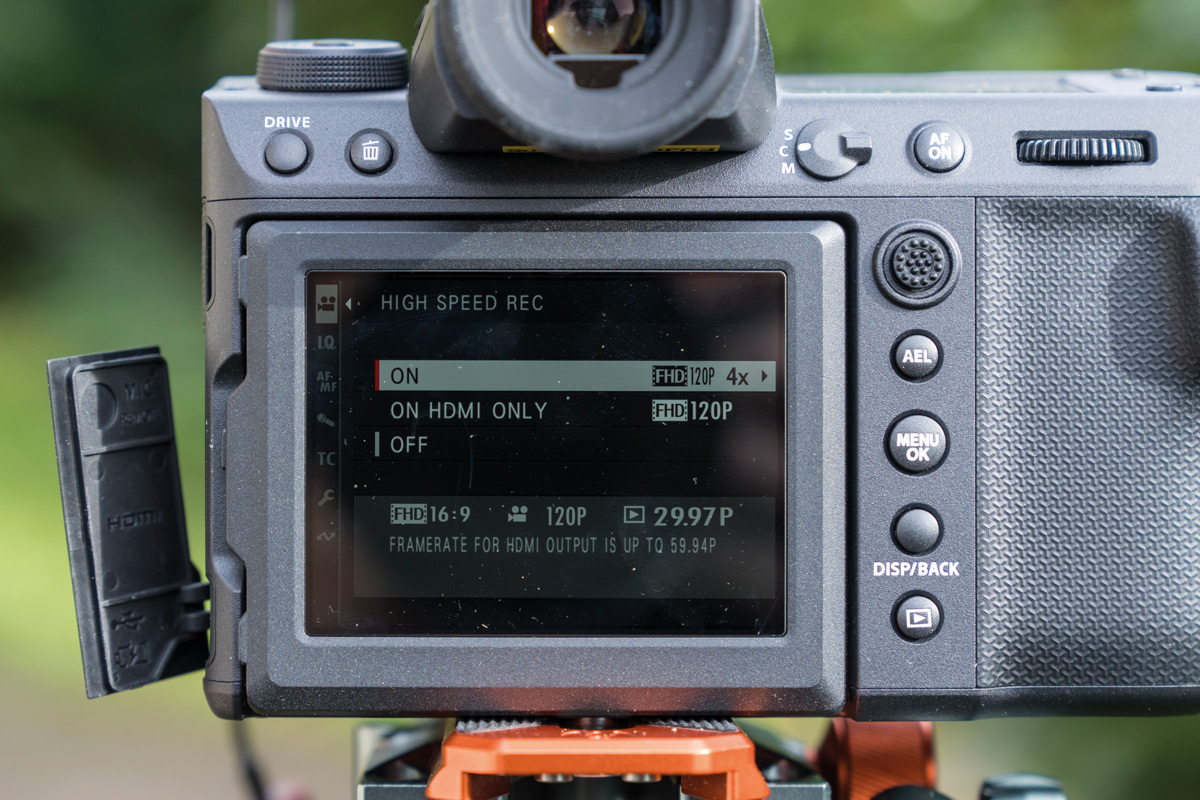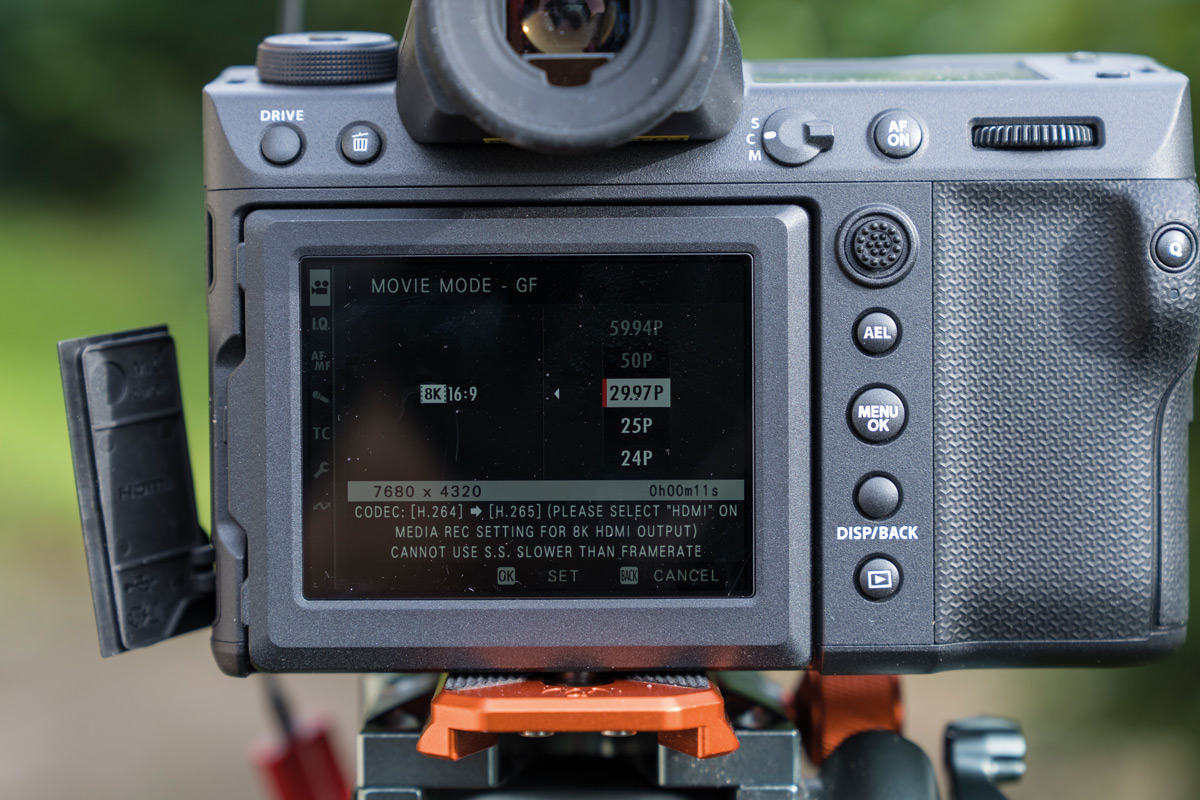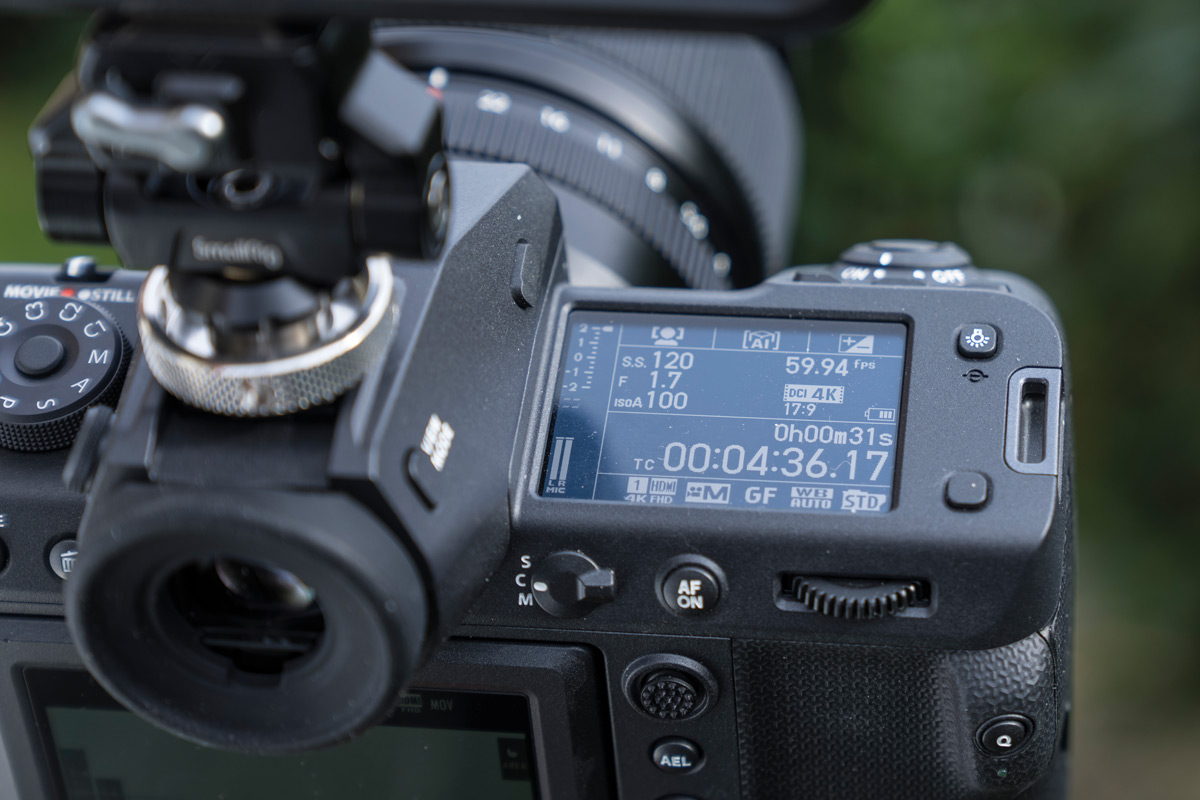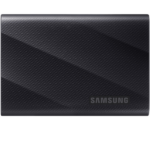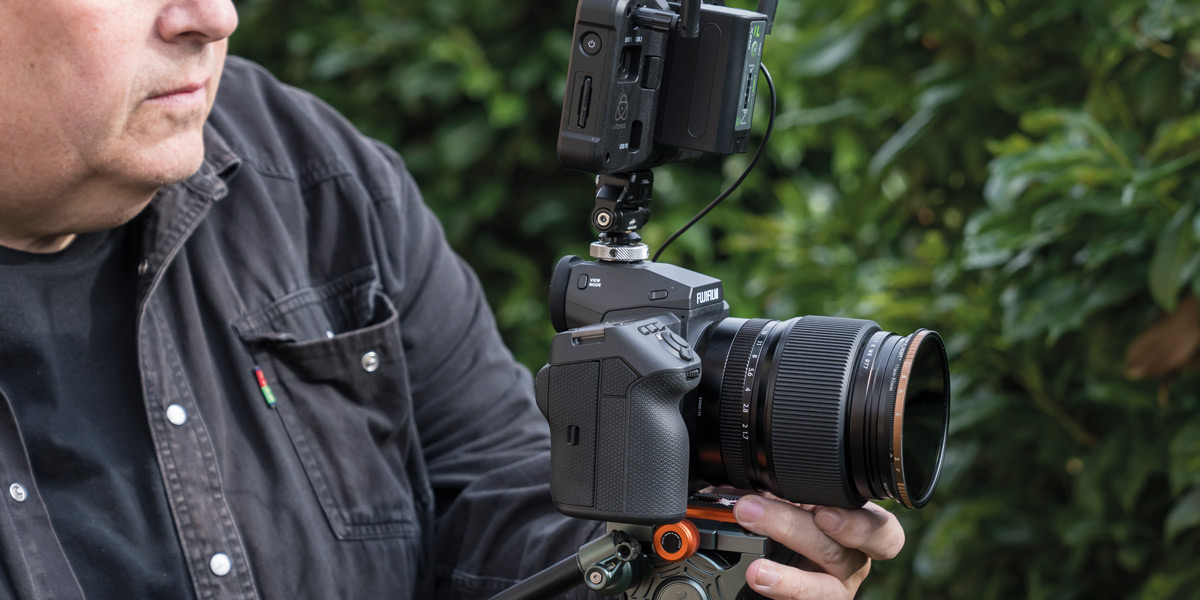
So much more than Full Frame
Posted on Dec 27, 2023 by Samara Husbands
It may be compact, but the GFX100 II offers a humungous sensor and fresh features ideal for moviemaking
If you are the sort of image maker who carefully considers every shot, values a unique look for stills and video and wants to squeeze the ultimate quality footage from every take, then Fujifilm might just have launched the perfect camera for you.
It’s the Fujifilm GFX100 II, with a sensor that dwarfs full-frame and has recently had a total makeover to give a massive boost to its filmmaking credentials. That includes 8K footage in 30p, 4K/60p in 4:2:2 10-bit captured internally, Full HD in 120p and a swathe of impressive tools like waveforms as well as hybrid phase detection AF.
But its biggest bonus is the huge sensor. If you come from a stills photography background then sensors this size were often called medium format, which was often the mark of a true, high-end professional. While 35mm ruled for sports and news, medium format was the domain of portrait, fashion, editorial, commercial and architecture shooters. The large image size gives a unique perspective to the photos that’s just not possible any other way.
When film gave way to digital, the medium format market shrunk as the large sensors were vastly expensive. And they were usually used in separate camera backs that just bolted onto the rear of traditional film-based cameras, with no autofocus or, at best, something that was not very accurate at all. A large sensor and high resolution calls for precise AF for pin-sharp images – and that remains a medium format disadvantage of traditional systems.
In filmmaking, Super 35 was the gold standard of large-sensor cameras for decades. Now full-frame is more prevalent, but the biggest-budget films use something even bigger – the Arri Alexa 65 – for that super-cinematic look. This camera is a rental-only option and not for general sale, even if you could afford it.
After the Alexa, the second-biggest sensor for shooting video is not in a pricey Red or Sony Venice, but in the GFX100 II. So for a relatively modest £6999/$7499 for the body, you get a camera that can give the unique perspective of the highest-end cinematography but also the advantages of a 100-megapixel medium format stills camera that features modern autofocus that really works. This is what makes the GFX100 II truly unique, and sets it apart as the first ultra-modern camera seemingly custom-designed for higher-end professional filmmakers as well as hybrid shooters.
Since it has a relatively small form factor, it can be used on drones, sliders and gimbals, the mainstays of so many productions nowadays. And it can be used on commercial shoots when the brief is for video and high-resolution stills which may be blown up large enough to use on billboards. For high-end retouching and SFX work, nothing works better than a larger sensor with loads of resolution.
If you are a high-end image maker – or have aspirations to be one – then the GFX100 II could be the camera to make you consider changing systems. Or, if you use PL-mount lenses in your work as
a DOP, you can mount them on the GFX100 II body via an adapter. It’s a camera that makes so much sense for today’s top creatives.
Of course, no camera is perfect and it’s not a superfast action and news camera. Compared to the latest crop of stacked-sensor full-frame or APS-C offerings, where you can shoot stills at 40fps or more for the ultimate spray-and-pray machine, it’s not ideal. But it’s not built for that – it’s made for quality above all else.
While the older GFX100 had a large body with an integrated grip like a pro DSLR, this form factor didn’t make it ideal for filmmaking. The Mark II version has a smaller body that works far better for filmmaking, and has a new 102-megapixel CMOS sensor that measures 43.8×32.9mm.
The camera offers a choice of different aspect ratios, including 35mm and Fujifilm’s Premista size as well as anamorphic with different de-squeeze monitoring options. But depending on the formats you choose, you do not end up using quite as much of the sensor as you might think.
Shoot in 8K and there is a significant 1.53x crop, so you are using a 29x16mm section of the sensor, which is smaller than full-frame. DCI 8K is marginally bigger with a 1.44x crop. If you absolutely must have the highest-resolution file and can handle a maximum frame rate of 30fps, then go for it.
But in reality, the sweet spot is using any of the formats that give a 1.01x crop – which is virtually nothing. So that’s 5.8K in 2.35:1 anamorphic, or either 4K or DCI 4K. All these allow frame rates up to 60fps and offer internal recording in Apple ProRes HQ, 422 and LT, H.265 in 4:2:2 or 4:2:0 as well as H.264 in 4:2:0 all in a choice of All-Intra and Long GOP compressions.
The Premista setting uses a 1.1x crop and offers similar options in 5.4K anamorphic and 4K/DCI 4K.
And if you want to shoot one of the ProRes options, then the camera offers ProRes 422 Proxy for a faster workflow in post. It’s quicker than converting a full ProRes file in your editing software.
All the footage can be recorded to a CFexpress Type B card or externally to a fast SSD via the USB-C port. If you want to use a monitor/recorder then the full-sized HDMI allows formats including Raw to be recorded. An Atomos unit converts the footage to 12-bit Apple ProRes Raw at up to 8K/29.97p while a Blackmagic Video Assist 12G saves it in 12-bit Blackmagic Raw. Apart from internal Raw, that’s pretty much every common format covered to every sort of media or recording device, so that gets a big thumbs-up. And beware, you will need a lot of storage space if you intend on using the most data-intensive formats and codecs. We filled up a 64GB CFexpress card in a matter of minutes when doing our tests. You will need to invest in some large cards and even bigger hard drives if you are going to shoot a lot.
See the full test in the November/December 2023 issue of Pro Moviemaker

